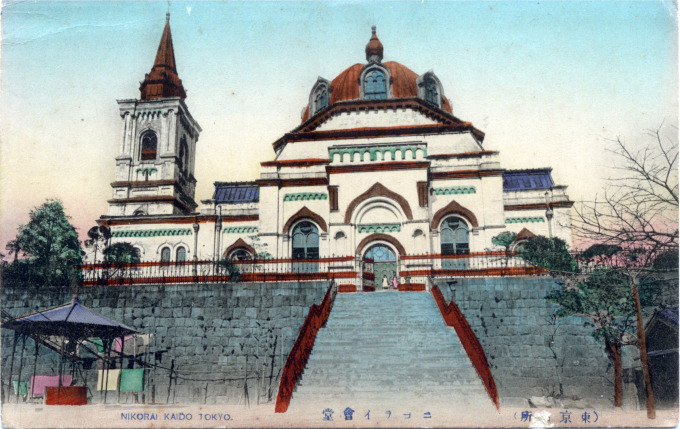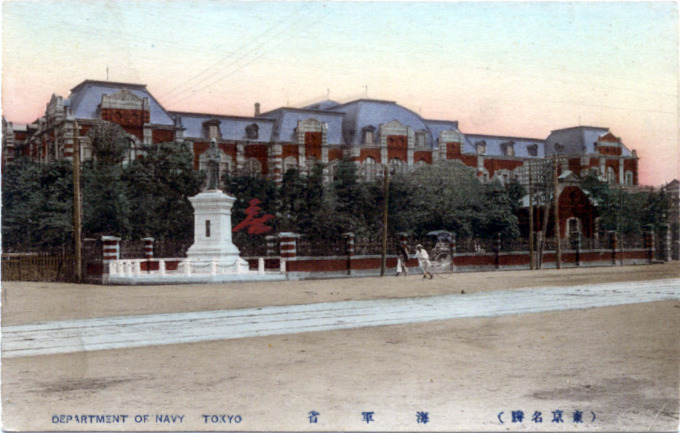See also:
Nikolai Cathedral, Ochanomizu
“Londontown”, Marunouchi, c. 1920
Ueno Imperial Museum
From the wiki: “Josiah Conder was a British architect who worked as a foreign adviser to the government of Meiji period Japan, earning him the nickname ‘father of Japanese modern architecture’.
“Recruited by the Japanese government to become Professor of Architecture at the Imperial College of Engineering, 24-year-old Conder arrived in Tokyo in January 1877 and quickly established a reputation as a dedicated and highly skilled teacher. His curriculum included not only extensive training in architectural practice but also drawing, technical draftsmanship, and architectural history and theory. Conder taught five of the most famous Meiji-era Japanese architects: Tatsuno Kingo (‘Bank of Japan‘, ‘Tokyo Central Station‘, ‘Manseibashi Station‘), Katayama Tōkuma (‘Akasaka Detached Palace‘), Sone Tatsuzō, Satachi Shichijirō and Shimoda Kikutarō, who were among the first Japanese architects to build western-style buildings in Japan.

Among the Josiah Conder-designed buildings still standing in Tokyo: Holy Resurrection Cathedral (Nikolai Cathedral), at Ochanomizu.
“Conder’s architectural designs incorporated a wide variety of styles, including European and colonial elements. Although he designed over fifty buildings during his career in Japan, many no longer exist, including the Navy Ministry at Kasumigaseki. One of Conder’s most prominent designs does still stand in Tokyo: Holy Resurrection Cathedral (Nikolai Cathedral), at Ochanomizu. [Image at right.]
“Conder developed a keen interest in Japanese arts and after a long period of petitioning, was finally accepted to study painting with the artist Kawanabe Kyōsai. Kyōsai dubbed Conder Kyōei, incorporating the character ei (英) from the Japanese name for Britain. Conder also studied the Enshu school of Ikebana. His studies led to a number of publications, among them ‘The Flowers of Japan and The Art of Floral Arrangement’ (1891), ‘Landscape Gardening in Japan’ (1893) and ‘Paintings and Studies by Kawanabe Kyosai’ (1911).
“In 1915, the Tokyo Imperial University awarded Conder an honorary doctorate. He remained in Japan for the rest of his life. His grave is at the temple of Gokoku-ji in Bunkyo, Tokyo.”



Pingback: Imperial Hotel (1890-1922). | Old Tokyo
Pingback: Taishin-in (Supreme Court, or Court of Cassation), c. 1910. | Old Tokyo
Pingback: Ueno Park Museums, c. 1910. | Old Tokyo
Pingback: Kasumigaseki (Government District), c. 1910. | Old Tokyo
Pingback: Tokyo Kaikan, c. 1930. | Old Tokyo
Pingback: Imperial Diet Building, Kasumigaseki, c. 1890-1940. | Old Tokyo
Pingback: Akasaka Detached Palace, c. 1920-1950. | Old TokyoOld Tokyo
Pingback: Akasaka Prince Hotel, Tokyo, c. 1960. | Old TokyoOld Tokyo